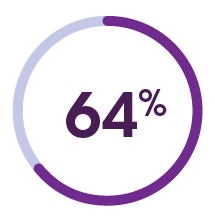CHAPTER 2: Understand Your Data
Take the next-best to make sense of your data with easy-to-use tools.

Once communications service providers have consolidated their data, they need to implement effective, easy-to-use tools to understand that data. Data visualisation tools and analytics built directly into employees’ workflows can help providers do more with their existing network, more deeply understand customer behaviour, and recognise changing patterns of demand.
With industry-specific, embedded analytics that are native to Salesforce, such as CRM Analytics for Communications Cloud. Service providers can help their sales and service teams make better decisions that are based on a complete customer view. This leads to:
- Increased sales productivity: Intelligent analytics guides sales representatives to take the next-best actions in order to reduce the time-to-quote, shorten the sales cycle, and boost revenue
- Personalised customer engagement: Communications service providers can design more effective acquisition and retention strategies based on a particular subscriber’s usage, preferences, and even churn risk, in addition to increasing NPS scores
- Stronger business impact: Providers can quickly measure and assess business performance against pre-built KPIs in an easily understood and shareable visual format, which ultimately drives automation within the business
Put Your Complete Customer View Into Action
Visualise Your Data
Use AI to unlock next best actions
Communications service providers face the challenge of continuously delivering powerful customer experiences while managing their costs. Once they unlock their data, they need to know what to do with it within the context of the work they’re already doing. To achieve this delicate balance, intelligent, built-in analytics informs decision making and removes guesswork.
AI analyses data and makes predictions based on customer behaviours and preferences. Providers can take these insights and deliver a seamless customer experience, increase employee productivity, and reduce the cost to serve. This enables sales and service agents to answer questions like:
- What is the health of my pipeline?
- Is there an upsell opportunity in the quotes already presented to the customer?
- Which quotes need attention so I can fulfill my quota?
- What should I focus on to improve my productivity?
At the same time, service agents need to understand the following:
- What is the sentiment of the customer I’m interacting with?
- Can I anticipate the customer’s request? How can I provide answers in a timely manner?
- Is the customer at risk of walking away?
- Is a retention offer appropriate at this time?
Communications service providers can also identify the drivers of customer churn, evaluate call-handling metrics, and measure the performance of different call scripts and agent teams — reducing costs and increasing customer satisfaction scores. In fact, 64% of companies that have fully embraced AI report more efficient operations and increased productivity as a benefit.

Create a virtuous cycle of data collection
Customers show their trust in two connected ways: They give their money and their data. The best way for providers to earn more data is to analyse existing data and turn it into insights, which leads to improved customer experiences. The cycle continues as long as they deliver what customers want: experiences that feel as effortless as possible. Here are some best practices to keep in mind:
- Create a voice-of-the-customer (VoC) function: Get feedback from customers to establish a baseline and set a single improvement goal as your starting point
- Integrate insights into one narrative: Tell one story behind the numbers — experiment with listening tours, advisory boards, and focus groups to bring color and context to scorecards and trendlines
- Operationalise insight reviews: Integrate customers into strategic planning and assign an accountable owner to each metric or measurement that stems from what you heard
- Invest in intelligence and automation to drive accountability: An analysis tool or machine layered on top of your qualitative feedback is one of the most effective ways to unlock insights
- Inspire a customer listening movement: Motivate your team and your stakeholders to stay engaged and keep acting on customers’ needs by recognising results and rewarding teams that become listening champions
- Close the loop: Listening means you need to communicate and react. Customers expect to hear back from you on what you are doing, what you’re not able to do, and what else you need from them for a successful partnership
Next: Chapter 3: Take Action With Your Data
See how to:
- Effectively respond to your customers
- Predict behaviours and next steps
- Take action with prescriptive intelligence








